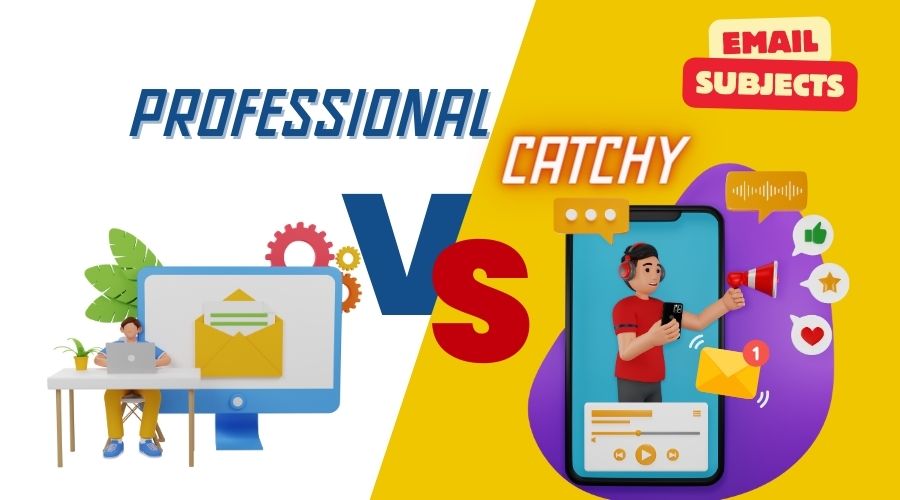Are you finding it difficult to get the hang of programmatic advertising terms?
Well, here’s a Programmatic Advertising Glossary to help you understand the key technical jargon of the programmatic ecosystem.
Let’s dig deeper!
Programmatic Advertising Glossary

A-D
Ad Network
It is a platform that connects advertisers with publishers with ad inventory on their websites or mobile apps. Advertisers use ad networks to reach their target audience through various ad formats, such as banner ads, video ads, native ads, and more.
Ad networks typically use data and algorithms to target ads to specific demographics or interests, making them more effective at reaching the right audience.
It also handles the technical aspects of ad serving, such as ad placement and optimization, allowing publishers to focus on creating quality content.
Ad Exchange
An ad exchange is a digital marketplace where advertisers and publishers combine to buy and sell ad inventory in real time through bidding. Ad exchanges are often powered by programmatic advertising technology, which uses algorithms and data to automate the buying and selling of ad inventory.
In an ad exchange, publishers list their available ad inventory, such as banner ad slots or video ad placements. Advertisers bid on that inventory in real-time through real-time bidding (RTB). Advertisers use data and targeting parameters to bid on ad impressions, and the highest bidder wins the right to serve their ad to the user.
Ad Slots
Ad slots are the space available at a publisher’s platform to display ads.
Ad Buying
Ad buying refers to purchasing ad slots available to place an ad.
Ads.txt
Ads.txt (Authorized Digital Sellers) is a text file publishers can place on their websites, listing the companies authorized to sell their digital inventory. It is an initiative launched by the Interactive Advertising Bureau (IAB) to help combat ad fraud and increase transparency in programmatic advertising.
The ads.txt file contains a list of authorized sellers of a publisher’s inventory, including ad networks, programmatic platforms, and other intermediaries. The purpose of ads.txt is to create a transparent chain of custody for programmatic ad inventory, making it harder for fraudsters to spoof domains and steal ad revenue.
When an ad is purchased through a programmatic platform, the buyer’s ad server checks the ads.txt file of the publisher’s website to ensure that the seller listed in the file is authorized to sell the inventory. The ad server will not bid on the inventory if the seller is not listed in the ads.txt file.
Ad Server
Ad server refers to technology that helps advertisers & publishers to distribute & manage ads across numerous advertising channels. Ad servers are used by advertisers, publishers, and ad networks to deliver, manage, and optimize their advertising campaigns.
Ad Verification
Ad verification ensures that online ads are being displayed to the right audience, on the right websites, and in the right context. Advertisers, publishers, and ad networks use ad verification tools and services to monitor and verify that their ads are being displayed correctly and that they are not being shown in inappropriate or fraudulent contexts.
Audience Targeting
Audience targeting uses data & algorithms to identify and target specific groups of people based on different factors such as demographics, interests, behavior, affinity, etc., with relevant ads.
Ad Fill Rate
It is a metric that helps publishers understand how many of their ad slots were filled out of the total ad slots available.
Ad Fill Rate = [Ad Served/Total No. of Ad requests] * 100
Ad Fraud
Ad Fraud in programmatic media buying refers to wasting an advertiser’s budget by deceptively inflating impressions & clicks.
API
Application Programming Interface (API) enables data transfer from different platforms to a unified dashboard.
Ad Injecting
It is a black-hat practice of using malicious software to place an ad illegitimately instead of another ad.
Behavioral Targeting
Behavioral targeting segments the audience based on their online activities to serve relevant ads to each segment. It uses a variety of data sources to track user behavior, including browsing history, search queries, social media activity, and demographic information. Advertisers can use this data to build a profile of a user’s interests and preferences and then use that profile to deliver ads that are more likely to be of interest to that user.
Brand Safety
Brand safety, as defined by IAB (International Advertising Bureau), is keeping a brand’s reputation safe by ensuring its ads are not placed next to inappropriate ads.
Bid Shading
It is a technique used to empower advertisers to pay the lowest possible price in 1st place auctions by finding the average between the lowest & highest-priced bids.
Click-Through Rate (CTR)
CTR calculates the percentage of clicks over impressions. CTR = [Clicks/Impressions]*100
Cost Per Click (CPC)
CPC refers to the amount an advertiser pays for each click they get on their ad. CPC = Total Amount Spend / Total Clicks.
Cost Per Mile (CPM)
CPM is the measure of ad spending per thousand impressions. CPM = [Ad Spend/Impressions] * 1000
Click Spam
Like ad fraud, click spam wastes an advertiser’s budget through fake ad clicks.
Cumulative Layout Shift (CLS)
CLS measures unexpected layout shifts of elements on a webpage after it is loaded. A CLS score of 0.1 or less is considered a good score & webmasters should ensure their webpages are qualified for this score.
DSP
A Demand Side Platform is used by advertisers to buy digital ad slots across multiple platforms.
Deal ID
Deal ID is a unique ID generated for each ad to make it easier for buyers & sellers to identify it.
Digital Out-Of-Home Advertising (DOOH)
DOOH advertising is a way to dynamically display ads through digital billboards targeted to individuals as they walk past them.
Dynamic Remarketing
Dynamic remarketing enables advertisers to target visitors interested in their product/service by showing them ads of the exact product/service they visited.
Dayparting
Dayparting enables advertisers to optimize the ad-timing, allowing them to schedule the ad at a specific day & time.
E-H
Exchange Bidding
It refers to a server-side unified auction controlled by Google that empowers publishers to deal with multiple offers in a single place, allowing more flexibility & options.
eCPM
Effective cost per mile (CPM) refers to a metric that publishers use to calculate the average of all CPMs [CPM (Cost per mile) = ad revenue per 1000 impressions]. It gives them the combined average of all advertisers’ bids for their ad inventory.
[eCPM = Total Ad Revenue/Total Ad Impressions]*1000
First Input Delay (FID)
FID measures the responsiveness of a webpage when a user engages (e.g., clicks on a link/button) with a web page for the first time. An optimum FID is 100 milliseconds or less.
Frequency Capping
It limits the number of times an ad is displayed to a single person over a given period.
First Price Auction
In the 1st price auction, the highest bidder pays what they have offered. For example, there are 3 bidders X, Y & Z; X bids $5, Y bids $10 & Z bids $7. Then, the winning bidder (Y) has to pay exactly what they offered in the first place, i.e., 10$.
First Party Data
First-party data refers to the data owned by the advertiser/company, collected through various means such as websites, CRM, social media platforms, applications, internal & external surveys, and offline data.
Floor Price
It is the minimum price decided by the publisher for which an ad slot can be sold.
Geo-targeting
Geo-targeting is targeting an audience based on their location.
Header Bidding
It allows publishers to offer ad slots to different ad exchanges simultaneously before making calls to their ad servers.
I-L
Impressions
It refers to the number of times an ad has been displayed to users.
Interstitial Ads
Interstitial ads are full-screen ads that cover the entire screen.
In-Stream Video
In-stream video is an online video advertisement that plays before, during, or after a piece of online video content, such as a YouTube video or a TV show being streamed online. In-stream video ads are typically 15-30 seconds long and can be skippable or non-skippable.
In-stream video ads can be delivered in various formats, such as pre-roll ads that play before the video content, mid-roll ads that play in the middle of the content, or post-roll ads that play after the content has ended. In-stream video ads can also target specific audiences based on age, gender, location, and interests, using data and algorithms to deliver ads to the most relevant viewers.
Keywords
Keywords are your target audience’s search terms for your product/service. You need to ensure you are using the right keywords to reach them.
Largest Contentful Paint (LCP)
LCP is a metric that reports the render time of the largest image or text block when the webpage starts loading.
Lazy Loading
It is a technique used to defer certain elements of a webpage until it is needed to save time & improve the speed of the page.
Landing Page
It is a web page where users land once they click on your ad. It should be relevant to the ad the user clicked on to meet their expectations.
Leaderboard Ad
It is a display ad that is usually placed in a prominent position, such as the top of the page, so that it is instantly visible to the users as soon as the page loads.
M-P
Mid-roll
These ads are displayed during the video.
Native Ads
Native ads blend seamlessly with the look & feel of the web property on which they are displayed.
Open Auction
Open Auction (AKA Real-time Bidding) is a real-time auction where advertisers bid on ad inventory based on specific audience targeting criteria, such as demographics, interests, and location.
Overlay Ads
Overlay ads are usually banner ads that appear over a video in a non–intrusive way.
Private Marketplace (PMP)
PMP is a private auction where the publishers book their premium ad slots for the selected advertisers, who are invited to bid for those reserved ad slots.
Preferred Deals
Preferred deals allow advertisers to exercise the right to choose the ad inventory at a fixed price before it is out on private marketplaces.
Programmatic Guaranteed
It allows publishers & advertisers to negotiate one-on-one. It does not involve bidding & the slots are directly sold to the advertiser post-negotiation.
Pre-roll Ads
Such ads appear before the video begins.
Post-roll Ads
Post-roll ads appear at the end of the video.
Price Floor
It refers to the minimum price a publisher is willing to sell their inventory for.
Programmatic Advertising
It is an automated process of trading digital ad inventories in real time through bidding.
Q-Z
Real-Time Bidding
Real-time Bidding allows advertisers to bid on ad inventories in real time based on specific audience targeting criteria.
Remnant Inventory
Remnant inventory is the unsold ad inventory which is usually sold at a discounted rate.
Return on Ad Spend
It is a metric that calculates the revenue earned from an ad campaign against the amount invested.
ROAS = Total Campaign Revenue/Total Campaign Cost
Second Price Auction
In the 2nd price auction, the second-highest bid sets the price of the winning bid. For example, there are 3 bidders X, Y & Z; X bids $8, Y bids $9 & Z bids $15. Here, the winner pays only $9.01
Supply Side Platform (SSP)
SSP is a platform that allows publishers to connect with multiple DSPs & ad networks to sell their available digital ad inventory & earn revenue. It also provides them with tools to manage their inventory & track their performance.
Targeting
The process of using data to identify and reach specific audiences based on characteristics like demographics, behavior, interests, or browsing history.
Third-Party Data
Third-party data refers to data not owned by the advertiser/company but purchased from a 3rd party.
vCPM
vCPM refers to cost/thousand viewable impressions. It means that advertisers only pay for ads that are active & visible on the screen.
vCPM = {Total Ad Budget/(Actual Impressions * Ad Viewability percentage)} * 1000
Video Ad Serving Template (VAST)
The Video Ad Serving Template (VAST) is a standard XML format used in digital video advertising to serve ads to online video players. The IAB created VAST to provide a universal standard for video advertising across different platforms and devices.
VAST provides a standardized way for ad servers to communicate with video players, allowing them to deliver and display video ads consistently. When a video player requests an ad, it sends a request to the ad server, which responds with a VAST document that contains information about the ad, including its duration, format, and targeting criteria.
Viewability
A metric that tracks whether an ad is visible to users. Ads must be viewed for a minimum period (usually one second) to be considered viewable.
vPAID
vPAID stands for Video Player-Ad Interface Definition, a standard developed by the Interactive Advertising Bureau (IAB) to enable rich interactive experiences within video ads. vPAID is a protocol that enables video ad players to communicate with ad creatives, allowing for more advanced interactivity and engagement in video ads.




